TLS/KVA Team Wins Minneapolis Riverfront Design Competition
By Bustler Editors|
Friday, Feb 11, 2011
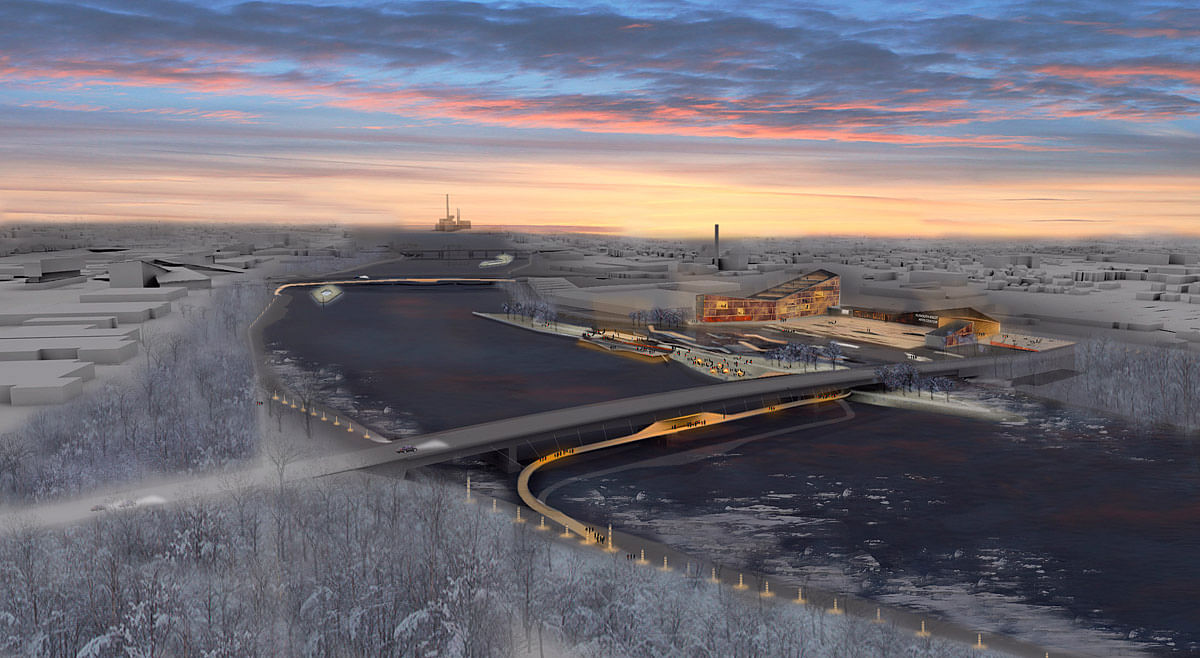
Related
The bi-coastal urban and landscape design team of TLS/KVA – Tom Leader Studio (Berkeley) and Kennedy & Violich Architecture (Boston) – were named the winning team of the Minneapolis Riverfront Design Competition (MR|DC) at a press conference in Minneapolis yesterday.
The TLS/KVA team comprises 14 additional firms, including nine Minnesota partners: Kestrel Design Group, St. Paul on the Mississippi Design Center, SRF Consulting, LBG-Guyton Associates, Donjek, Economic Development Services, Mortensen Construction, Inter-Fluve, and Solid Gold.
TLS/KVA was first selected as one of four finalists in November 2010, from a pool of 55 Request for Qualifications submittals representing 14 countries on five continents. The other three finalists were award-winning teams led by Ken Smith Workshop (New York City), Stoss Landscape Urbanism (Boston), and Turenscape (Beijing). The teams impressed an overflow audience at the Walker Art Center, January 27, when they presented their proposals to the public and the competition’s jury. More than 600 people attended the event in person or via live webcast; thousands more viewed the teams’ proposal videos online.
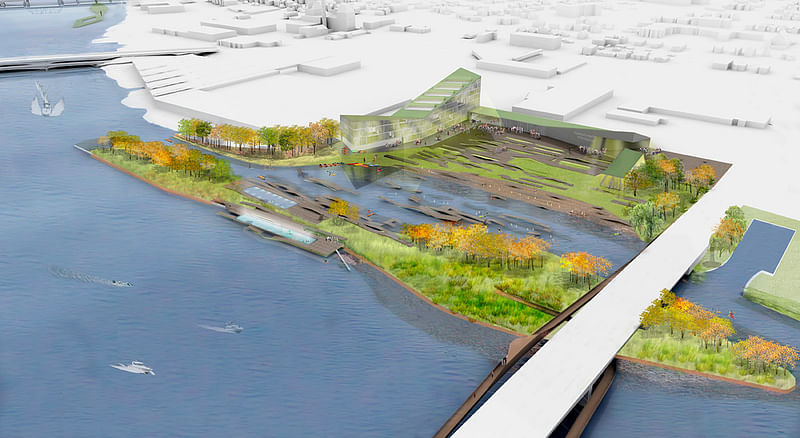
On January 28, the MR|DC’s 14-member jury of nationally known parks and design professionals and local decision‐makers met to evaluate the proposals. The jury’s evaluation was based on the criteria and deliverables outlined in the Competition Brief, as well as how well the proposals met the competition’s stated goals: establish parks as the economic engine for development along the river; knit communities on both sides of the riverfront to and across the river; and re‐focus Minneapolis and the region toward one of the three great rivers of the world.
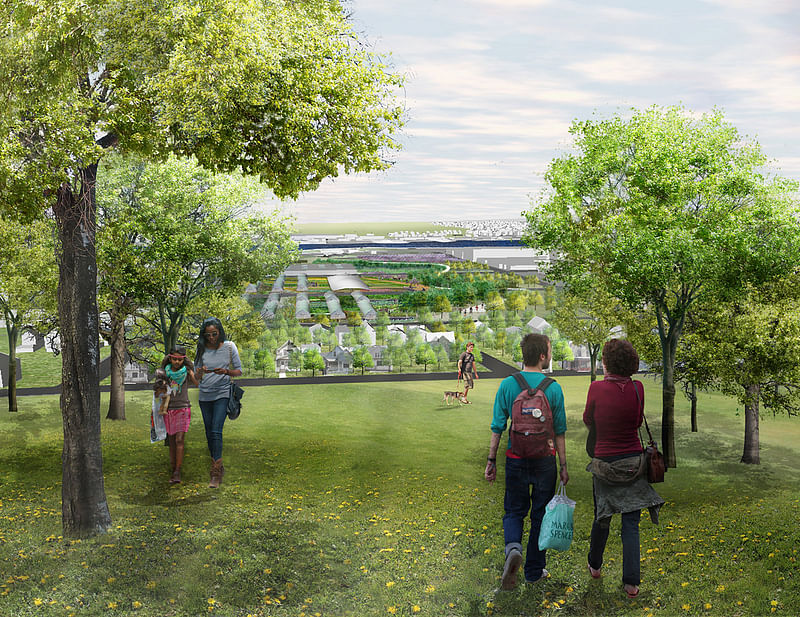
“Among a pool of proposals worthy of America’s fourth coast, TLS/KVA’s RIVERFIRST stood out as particularly well suited to the Upper Riverfront in Minneapolis. The team grounded their proposal in proactive outreach to the community, demonstrated extensive research, and posited several multi-‐layered solutions unique to these 11 miles of riverfront and the habitat, communities, businesses, infrastructure, and culture intrinsic to our region,” says David Fisher, Superintendent Emeritus of the Minneapolis Park and Recreation Board and an MR|DC jury member. Fisher noted that the jury valued the participation of the other three finalists and the talent and effort represented in the proposals they submitted.
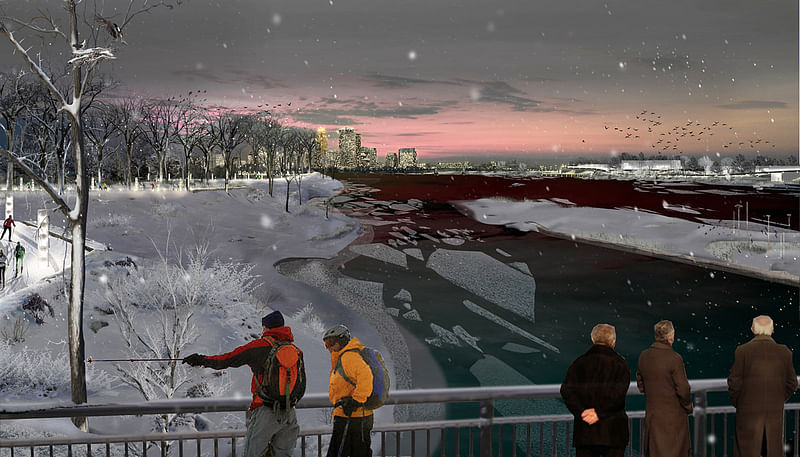
The TLS/KVA RIVERFIRST proposal offers a comprehensive remediation of the city’s storm water management system and its conceptual transformation into a system of ‘tributaries’ that are naturally cleaned with planted bio‐filtration landscapes and returned to the river. The topography of the RIVERFIRST design is guided by the dynamics of the river. Where water scours and erodes, carving design principles are used to create water remediation ravines and terrace overlooks on the North East Bluffs. Where the river deposits new material, accretive principles of design are used to mold and shape land berms for the new Park.
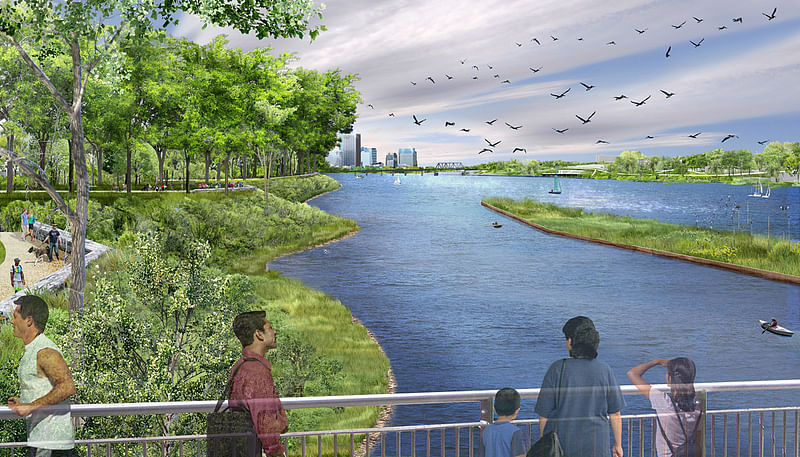
The recovery of Northside Wetlands, and the design of storm water remediation ‘ravines’ on the North East bluffs integrate public parkland with municipal eco-infrastructure and a wide range of recreation activities. The TLS/KVA design uses site topography to reconnect the Northside’s historic Farview Park with the River, urban agriculture and new skilled jobs in a proposed River City Innovation District. The site’s sloped cross-section provides for a compact footprint for a Green Port and Green Economy Industries. Sculpted landforms enable pedestrian and bike/ski River Shore Trails to rise above existing barge terminals allowing for immediate, continuous public Riverfront access. The RIVERFIRST design for Scherer Park restores Hall’s Island with public swim/skate and kayak launching facility and provides for sustainable Housing, Live/Work Studios and an Arts Center. At Scherer Park, the river produces its own dynamic landscape of sand bars and shallow pools that shift according to winter melts, patterns of sediment deposition and river flows.
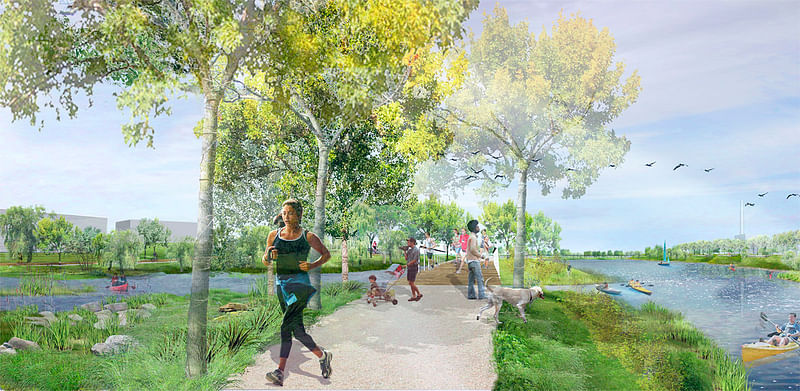
Real time water monitoring from the Minnesota USGS website is made public with energy efficient, smart illumination along Knot Bridges which link the creative energy of the NE Arts District with the River City Innovation District and Downtown. Floating Biohaven Islands made of recycled water bottles anchored to existing bridge piers provide seven acres of protected riparian habitat for migrating birds and endangered wildlife. The River Talk mobile phone app and solar powered Park WiFi Network create unprecedented opportunities for local and national public education about river ecology attracting world‐class institutional, corporate and organizational partners to the Minneapolis Parks.
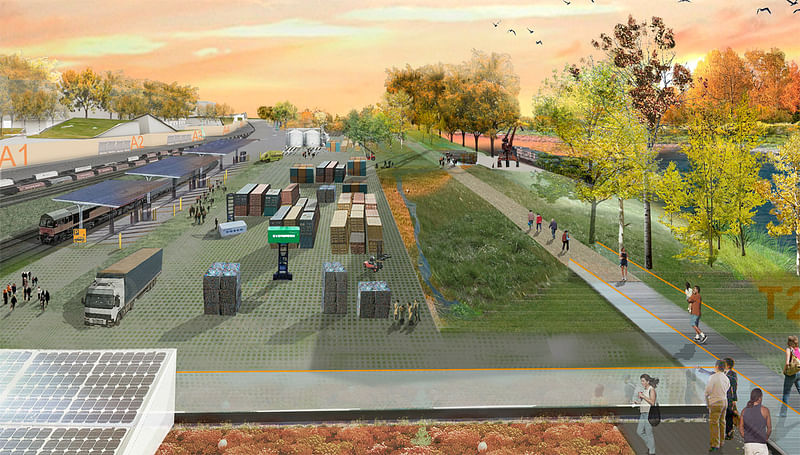
The transition to the Minneapolis riverfront initiative With their selection as the winning team, TLS/KVA will be awarded a riverfront parks commission and become part of the Minneapolis Park and Recreation Board’s Minneapolis riverfront initiative, of which the design competition was the first phase. While the team’s RiverFIRST proposal contained many specific design schemes, no particular location, project or feature has yet been identified for development. As the design competition concludes, the Park Board and its partners will engage in a four‐month transition phase to identify next steps.

“With the success of Minneapolis Riverfront Design Competition, the largest design competition in Minneapolis history, we’ve established that the Minneapolis Park and Recreation Board can achieve great things on behalf of the people of Minneapolis and the region,” says Jayne Miller, Superintendent of the Minneapolis Park and Recreation Board. Beginning in the 1980s, a Park Board-‐led revitalization of the Downtown Central Riverfront leveraged private investments that resulted in nearly 10,000 retained or created jobs. “We intend to replicate that same level of results-‐focused implementation with the next phases of our riverfront initiative.”
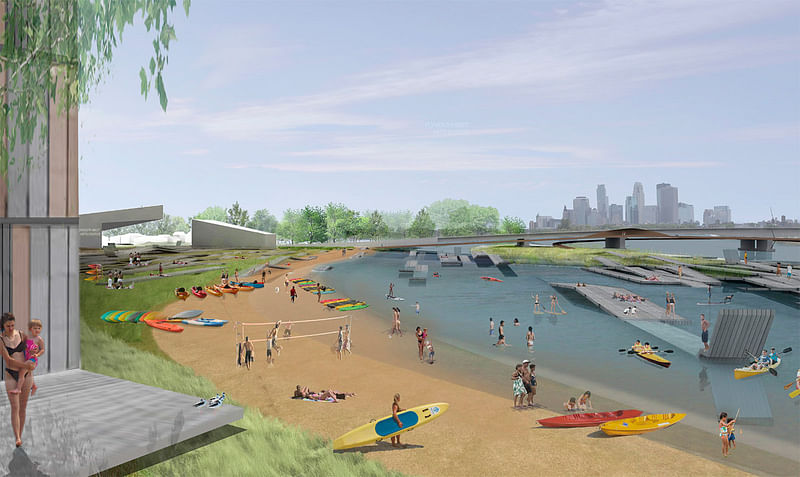
During the transition phase, the Park Board will establish a steering committee made up of individuals and organizations with experience stewarding large-scale, multi-disciplinary public projects or who have a vested interest in the riverfront. The steering committee will work along several parallel tracks: organizational development; planning, design and construction; resource identification; and on-going community engagement and two-way communication. In June 2011, the Park Board will announce the process for the next steps in the initiative.

“Our community – not just Minneapolis, but the region and all those who view the Mississippi River as an icon of the American heartland – has high expectations of Minneapolis parks. Our reputation as the City of Lakes helps our broader community draw visitors and residents and contributes to our region’s reputation as one of the best places to live and raise a family,” says Miller. “With our riverfront initiative, we’re well aware of our responsibility to uphold our heritage and create a parks-centered riverfront worthy of both our great river and the people who live, work and visit it now and into the future.”
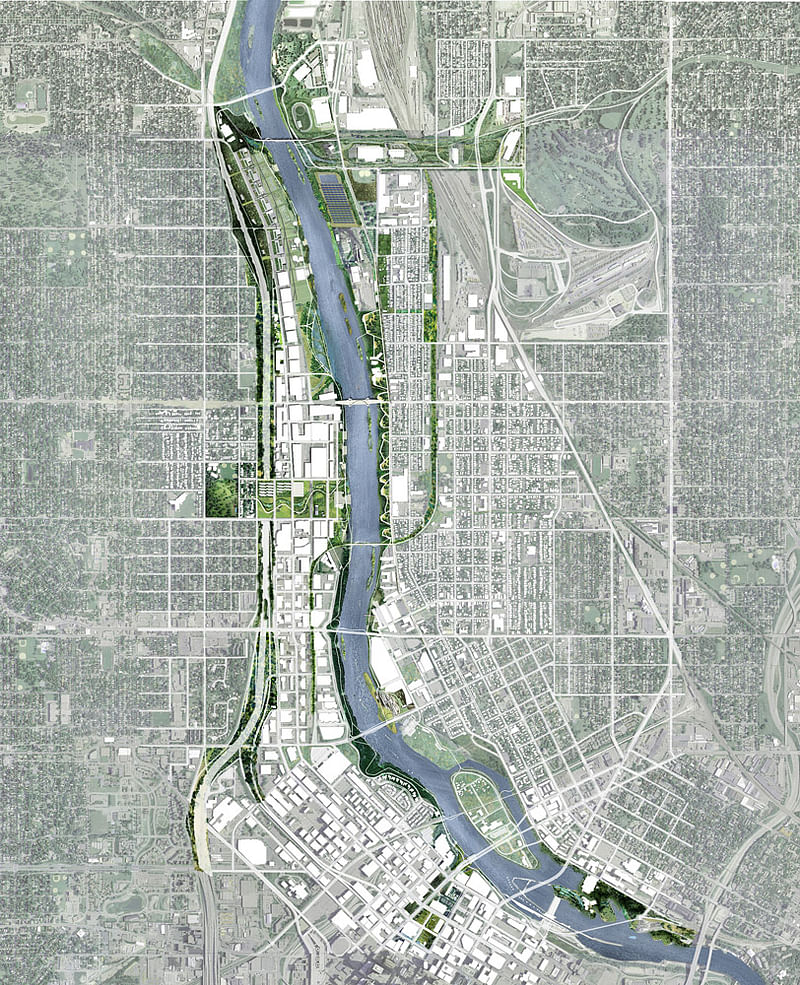

Share
0 Comments
Comment as :